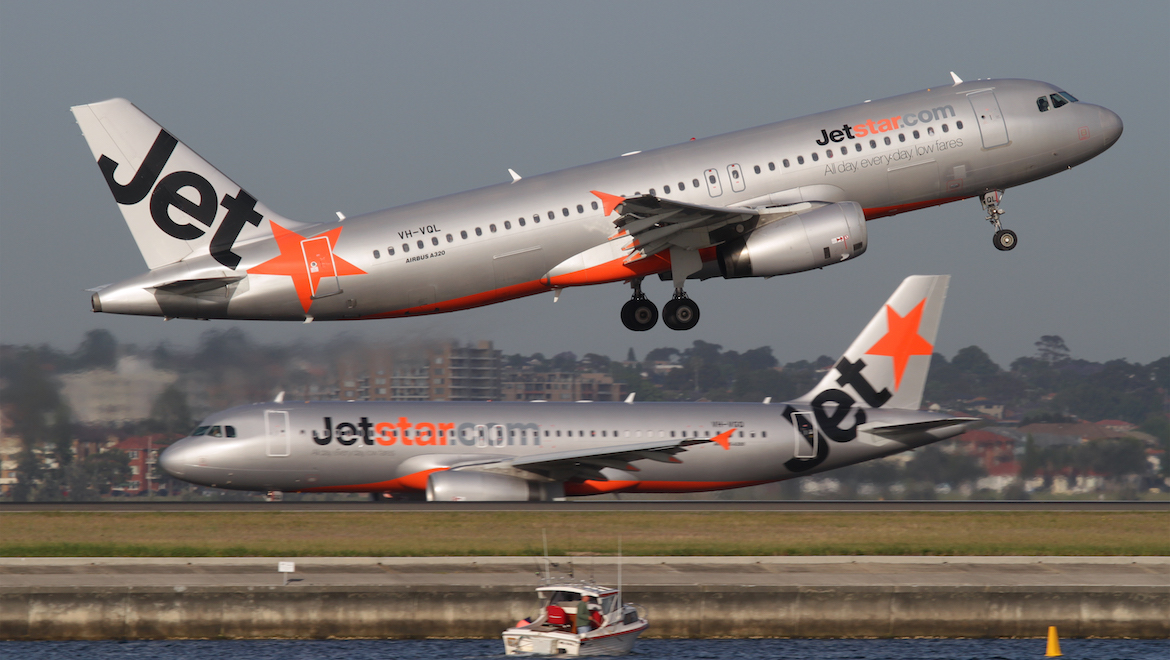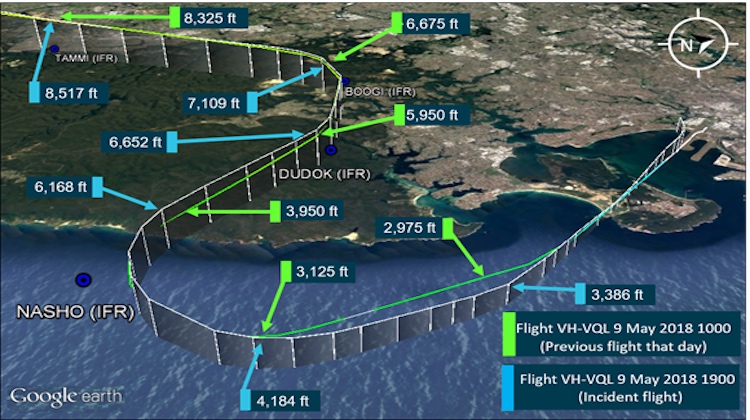
A Jetstar Airbus A320 experienced a flap and landing gear overspeed when conducting a go-around where the flight crew did not follow standard operating procedures, an Australian Transport Safety Bureau (ATSB) report says.
The incident occurred on May 9 2018, when the A320 VH-VQL was flying from Melbourne Avalon to Sydney with six crew and 117 passengers on board.
The ATSB final report published on Tuesday said during the A320s descent, flight crew had selected an “open descent mode” in order to increase the aircraft’s rate of descent after observing the aircraft was high in relation to the glideslope for Runway 34L.
The flight crew then deployed speed brakes to attempt to intercept the glide slope.
However, when descending through 1,800 ft, the ATSB final report found flight crew inadvertently activated open climb mode with the selection of the assigned altitude selector to 3,000ft.
This resulted in an undetected increase in thrust, which destabilised the approach, and led to a flap overspeed.
When the Captain, who was the pilot monitoring (PM), assessed that the approach was not stable, he commanded the First Officer (FO), who was the pilot flying (PF), to go around.
“In response, the FO increased the thrust levers to the take-off/go-around setting (TOGA) however, recorded data showed that the aircraft was not pitched to the required 15 degrees nose-up attitude,” the ATSB final report said.
“Consequently, the aircraft continued to accelerate.”


The ATSB report said the Captain reported “pitch” and “speed” to draw the First Officer’s attention to the under rotation.
However, the aircraft exceeded the maximum “flaps 2” extension speed by 8kts.
“The FO reported identifying that as the aircraft was going to exceed the ‘flaps 2’ speed, he selected ‘flaps 1’, which was not in accordance with the standard operating procedures,” the ATSB final report said.
“However, the aircraft also accelerated through the maximum ‘flaps 1’ extension speed of 230 kt by about 8kt and by the time the flap had fully retracted, the exceedance had increased to 24 kt.
And by the time the First Officer had ordered the retraction of the landing gear, the aircraft had exceeded the maximum landing gear transition speed by 13kt.
The Captain advised the First Officer that he was taking control of the aircraft as the “flaps 1” extension speed was exceeded.
“Recorded data showed that the captain reduced the thrust, pitched the aircraft to 15 degrees nose-up, and climbed to the missed approach altitude,” the ATSB report said.
“The Captain assumed the pilot flying role for the remainder of the flight, and an approach and landing was made on runway 34L.”
A Jetstar spokesperson told Australian Aviation in an emailed statement on Thursday: “We reported the matter to the ATSB and conducted an internal investigation, with a reminder issued to our pilots about the importance of adhering to standard operating procedures.”
An analysis of ATSB incident reports showed this was the third incident in six years involving a Jetstar flight that conducted a go-around that has been investigated.
The ATSB is currently investigating a May 18 2018 incident where a Jetstar Airbus A320-200 conducted two go-arounds at Ballina Byron Gateway Airport.
A summary of the incident on the ATSB website noted an incorrect flap setting was used for the first go-around, while a landing gear not down warning was triggered during the second approach, leading to another go-around.
Meanwhile, a Jetstar A321 exceeded the flap limit speed and exceeded 2,000ft altitude limit assigned by air traffic control when conducing a go-around at Cairns in September 2012.
The ATSB final report into the May 9 2018 incident at Sydney noted the handling of approach to land was one of its SafetyWatch priorities.
“Unexpected events during the approach and landing can substantially increase what is often a high workload period,” the ATSB final report said.
“Adherence to standard operating procedures and correctly monitoring the aircraft and approach parameters provides assurance that an independent visual approach can be safely completed.”
“The selection of inappropriate auto-flight modes, unexpected developments, or any confusion about roles or procedures can contribute to decisions and actions that increase the safety risk to the aircraft and its passengers.”
“A go-around should be immediately carried out if the approach becomes unstable or the landing runway cannot be identified from the minimum descent altitude or missed approach point.”
The full report can be read on the ATSB website.
















David Lourensz
says:Given Australia has such a low volume of aircraft movements in comparison to South East Asia and China, I wonder how these areas of high traffic volume deal with such cases in an efficient way. Standard operating procedures are very important but I’m sure incidents such as these are occuring all the time. Without minimizing its impotence, does an overspeed of 8kts or even 24kts really matter structurally. I guess aerodynamically, it is of more significance particularly around tight approach speeds. I do think though that operating in the correct mode is significant as things could potentially escalate out of control.